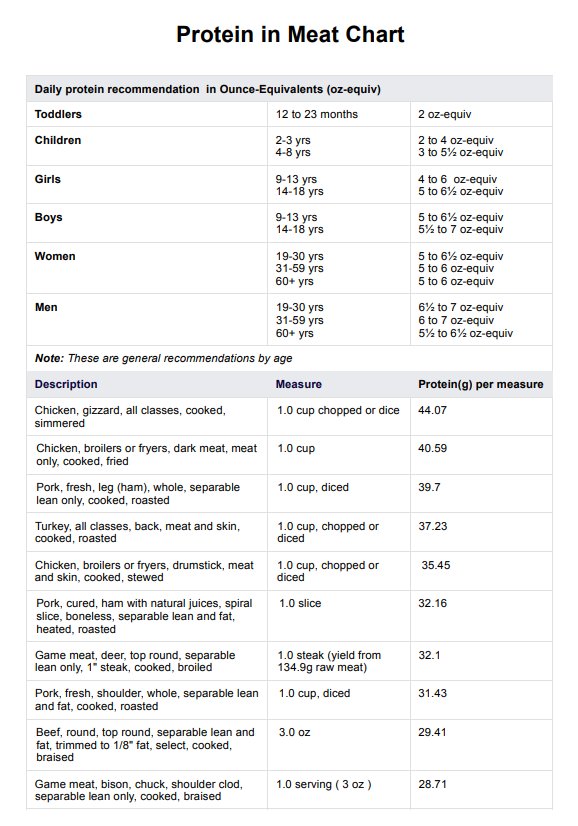Chicken breast, beef fillet steak, lean ground beef, and fish are the foods with the highest protein meats.

Protein in Meat Chart
Discover the ultimate Protein in Meat Chart – your go-to guide for nutritional excellence and a high-protein diet.
Use Template
Protein in Meat Chart Template
Commonly asked questions
Processed meat typically contains the lowest grams of protein compared to options like lean beef, lean pork, or canned tuna. While these healthier choices provide enough protein and essential amino acids for healthy eating, processed options often lack comparable nutritional value.
Protein content varies; refer to the chart for specifics on meats, with amounts listed per serving.
EHR and practice management software
Get started for free
*No credit card required
Free
$0/usd
Unlimited clients
Telehealth
1GB of storage
Client portal text
Automated billing and online payments











